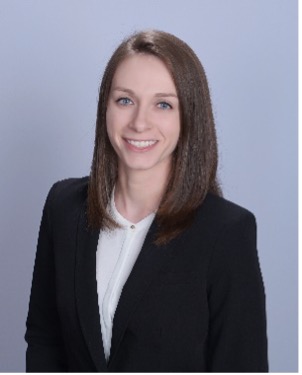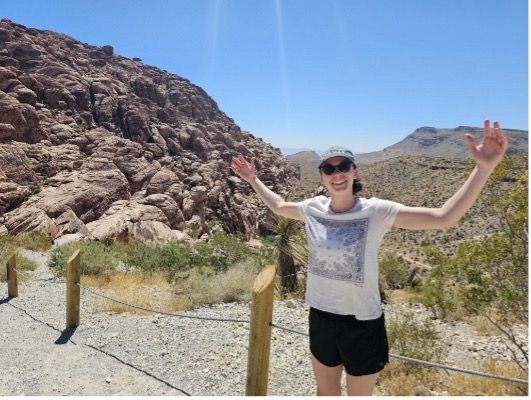
Hannah Bisoglio, OMS IV
A Medical Student Series: On the Road to Graduation
By pursuing medicine, you have made the investment in yourself so that you may serve others. I hope my monthly series of articles provides you with valuable information and tips that I have learned along the way.
Hey there! I am a fourth-year medical student who grew up in central Missouri. I attend A.T. Still University – Kirksville College of Osteopathic Medicine and am applying to residency in Emergency Medicine.
Securing Audition Rotations for Medical Students
During clinical rotations in your third year of medical school, you are busy studying for shelf exams, attending didactics, adjusting to new work hours every few weeks, and managing your life outside of medicine. At what point do you begin to look ahead to fourth year and wrapping up medical school? If you are like me, you want to schedule early and have everything lined up, so you are not worrying about it later. However, plans change! At the beginning of third year, take some time to acclimate to the hospital and direct your focus on practicing your clinical skills while working with patients. Start thinking about future rotations by the end of your first semester in third year and make an action plan within the next couple of months.
Audition rotations, also referred to as sub-internships, are two-to-four-week electives during which medical students generally operate at intern level within a residency program. They are not required; however, auditions are a great chance to learn more about residency programs, impress program faculty, and obtain strong letters of recommendation. (https://www.ama-assn.org/medical-students/clinical-rotations/away-rotation-advice-and-requirements-medical-school-clinical)
In most cases, you must apply for an audition rotation. This can be done by contacting the program directly or using online application systems such as Clinician Nexus and the Visiting Student Learning Opportunities (VSLO) platform by AAMC. A fee of $15 per application is charged on VSLO. Various programs start accepting applications at different times (for example, one program may begin accepting applicants in March, and another program accepts in April). These dates are listed within VSLO, or they can be found on program websites. (https://students-residents.aamc.org/visiting-student-learning-opportunities/how-use-vslo-application-service)
How do you choose where to rotate? This is personal. I recommend applying to rotate at programs where you think you want to do residency. That way, you can get the best experience of what life is like for residents at that program while displaying your skills. By showing your interest and networking with faculty on an audition, applicants generally have a better chance of interviewing with that program and being ranked highly. (https://systems.aamc.org/eras/erasstats/par/index.cfm)
I would advise you to research each program where you are interested in having an audition rotation. Each program will have its own specific requirements, which can be found on their websites under “Medical Student Clerkships” or something similar. Be aware that some programs require a fee to be paid for the rotation. Two of my auditions charged a $150 rotation fee. On top of that, remember to think about costs for transportation, groceries, housing, and more. Audition rotations can be very expensive. I completed four auditions. My strategy was to apply to programs in areas where I could be housed by family, friends, or the program itself. Yes, some audition rotations provide housing to students for a fee (usually less than an AirBnB or hotel).
Next is gathering paperwork. You will want to do this early because the sooner you can complete the audition rotation application, the sooner you can be chosen by the program instead of another student filling the spot. Again, each program has specific requirements. You will need documentation such as a letter of good standing, immunizations, proof of ACLS and BLS, unofficial transcripts, a curriculum vitae, etc., to submit with your application.
Residency programs will offer certain time frames in which students may schedule rotations. I highly recommend taking board exams before you begin audition rotations, so you may place all your attention on having an impressive rotation. Audition season starts in June, and programs may take visiting students through February of the next year. Residency applications (Via ERAS) are due in late September. Interviews begin in mid-late October. In my experience, I recommend completing audition rotations before you start the bulk of your residency interviewing because many sub-internships will not give you the time off you might need for interviews. And to be honest, I was tired by the time I finished auditioning. I wanted to pivot my sole attention to my residency interviews. (https://www.youtube.com/watch?v=yCooxVNS4jo)

I know this seems like a lot, but you can do it! Perhaps make a checklist and eliminate one task at a time. It might seem stressful because you want to make a good impression, but go in there and be optimistic, friendly, and helpful, and you will do a good job. I prepped during my commutes with podcasts such as EM Clerkship. Another important tip I would like to emphasize is to make time for fun! (The photo of me was taken during my audition rotation in Las Vegas.) While I do not intend this to be a fully comprehensive guide, I do hope that you find this content from my experience helpful. Read next month’s MAOPS Prognosis for more articles!
Hannah Bisoglio, OMS-IV
